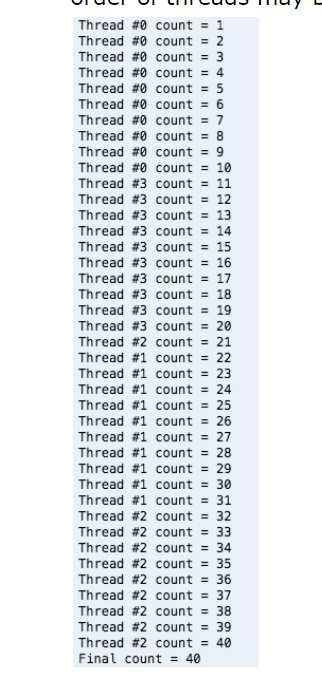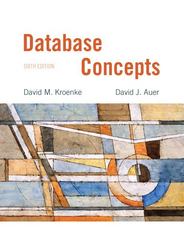Question
Part 3: Pthread Mutex Implementation (10 points) Modify the pthread-data-sharing-mutex-os-call.cpp program to apply a Pthread mutex solution, i.e., you will use Linux system calls to
Part 3: Pthread Mutex Implementation (10 points)
Modify the pthread-data-sharing-mutex-os-call.cpp program to apply a Pthread mutex solution, i.e., you will use Linux system calls to control access to the critical region. Refer to the prep materials for background info (section 2.3.6 in the textbook) and also to the Linux manual for the names and parameters of the functions. See https://linux.die.net/man/3/pthread_mutex_init The necessary changes will be very small, i.e., not a lot of code is needed.
Build and execute the updated program several times. Expected Output: Your program should produce output similar to the following (Note: the order of your threads may be different)

Base Code:
#include
#include
#include
#define TOTAL_THREADS 4
int count;
pthread_mutex_t the_mutex; // phread mutex variable
void* myFunction(void* arg)
{
int actual_arg = *((int*) arg);
for(unsigned int i = 0; i
// TODO:
// Use a Pthread mutex to control
// access to the critical region.
// Beginning of the critical region
count++;
std::cout
// Random wait - This code is just to ensure that the threads
// show data sharing problems
int max = rand() % 100000;
for (int x = 0; x
// End of random wait code
// End of the critical region
}
pthread_exit(NULL);
}
int main()
{
int rc[TOTAL_THREADS];
pthread_t ids[TOTAL_THREADS];
int args[TOTAL_THREADS];
// TODO: Initialize the pthread mutex here
count = 0;
for(unsigned int i = 0; i
args[i] = i;
rc[i] = pthread_create(&ids[i], NULL, myFunction, (void*) &args[i]);
}
for(unsigned int i = 0; i
pthread_join(ids[i], NULL);
}
std::cout
pthread_exit(NULL);
}
Thread #0 count 1 Thread #0 count 2 Thread #0 count 3 Thread #0 count-4 Thread #0 count 5 Thread #0 count 6 Thread #0 count 7 Thread #0 count 8 Thread #0 count 9 Thread #0 count- 10 Thread #3 count 11 Thread #3 count- 12 Thread #3 count 13 Thread #3 count 14 Thread #3 count 15 Thread #3 count- 16 Thread #3 count 17 Thread #3 count- 18 Thread #3 count 19 Thread #3 count 20 Thread #2 count 21 Thread #1 count-22 Thread #1 count-23 Thread #1 count-24 Thread #1 count 25 Thread #1 count 26 Thread #1 count-27 Thread #1 count 28 Thread #1 count 29 Thread #1 count-30 Thread #1 count 31 Thread #2 count 32 Thread #2 count -33 Thread #2 count 34 Thread #2 count 35 Thread #2 count-36 Thread #2 count 37 Thread #2 count 38 Thread #2 count 39 Thread #2 count-40 Final count 40
Step by Step Solution
There are 3 Steps involved in it
Step: 1

Get Instant Access to Expert-Tailored Solutions
See step-by-step solutions with expert insights and AI powered tools for academic success
Step: 2

Step: 3

Ace Your Homework with AI
Get the answers you need in no time with our AI-driven, step-by-step assistance
Get Started


